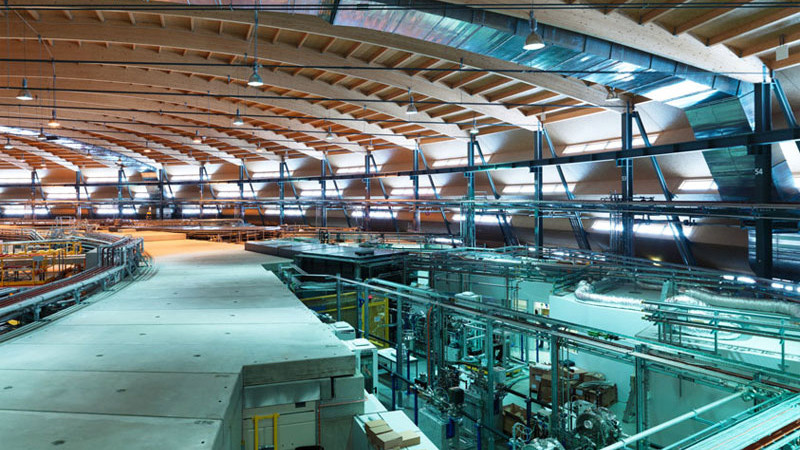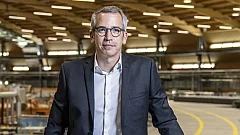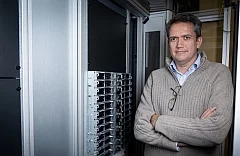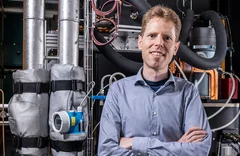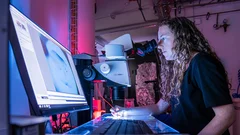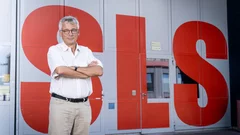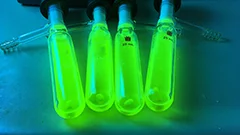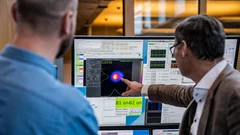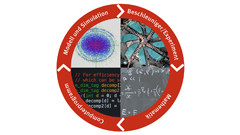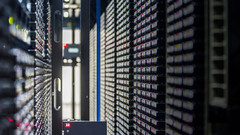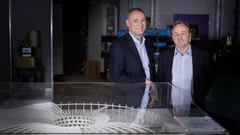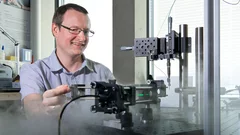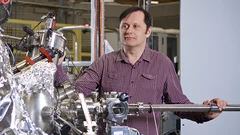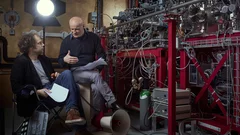Large Research Facilities
Sometimes, one needs unusually large pieces of equipment to look at the smallest of objects – because only these large machines or facilities can generate the probes
that are needed to examine matter in such a way that the information being sought can be obtained. PSI maintains a number of such facilities, making them available as a service for other institutions, but also using them for its own research. These facilities are unique within Switzerland, and PSI is the only location in the world for some of the facilities
Read more at: Large Research Facilities
Further information
Secret of Stradivarius violins revealed
As an international team of researchers discovered, the old Italian masters Stradivari and Guarneri relied on unexpected chemical additives in making violins.
Growth in the data sciences
Another site for the Swiss Data Science Center will be established at PSI. This expansion is expected to give a further boost to the data sciences in Switzerland.
PSI equips the Swiss Light Source SLS for the future
Green light for SLS 2.0: The planned upgrade of the Swiss Light Source SLS can proceed; the funding is provided for within the framework of the ERI Dispatch for 2021-2024, which has been approved.
The librarian of the petabytes
It is necessary to prepare now for the planned upgrade of the Swiss Light Source SLS. In order to do justice to future research, Alun Ashton is estimating the amount of data that future experiments will produce.
Milestone for the second beamline of SwissFEL
At the X-ray free-electron laser SwissFEL of the Paul Scherrer Institute PSI, the second beamline is currently being put into operation. With Athos, researchers want to understand how catalysts work or how biomolecules cause hereditary diseases.
SwissFEL: a perfect habitat for the black mortar bee
For the construction of the SwissFEL facility in 2013, around five hectares of forest were cleared and transformed into a new habitat for flora and fauna. Biologists and forest engineers have now assessed the results of the renaturization project and are excited about the progress to date.
A question of binding
At PSI, researchers are screening molecule fragments to see if these bind to important proteins of the coronavirus SARS-CoV-2 and thus have the potential to disable it. They are hoping the many individual pieces of information will yield an answer as to what an effective drug might look like.
«We're making SLS fit for the future»
The Swiss Light Source SLS is set to get an upgrade to make excellent research possible in the coming decades as well. Hans Braun, SLS 2.0 project leader, talks about this undertaking in an interview.
In search of the lighting material of the future
At the Paul Scherrer Institute PSI, researchers have gained insights into a promising material for organic light-emitting diodes (OLEDs). This new understanding at the atomic level will help to develop new lighting materials that have higher light output and also are cost-efficient to manufacture.
Athos is making great strides
The new beamline at PSI's X-ray free-electron laser SwissFEL will soon be ready for action. In December, Athos delivered laser light for the first time − even sooner than expected, to the delight of the researchers responsible for its construction.
Simulation: The third pillar of science
PSI researchers simulate and model large research facilities as well as experiments, for example, in the materials and biological sciences. Andreas Adelmann, head of PSI's Laboratory for Scientific Computing and Modelling, explains how they do it.
Modelling and simulation pay off
Researchers in PSI's Laboratory for Scientific Computing and Modelling solve the most complex problems through a combination of theory, modelling, and high-performance computing. With powerful computers, they simulate the smallest molecules or large research facilities.
5,000,000,000,000,000 bytes from Villigen to Lugano
During investigations of tiny structures with large research facilities, huge amounts of data accumulate at the Paul Scherrer Institute PSI. This data is archived at the CSCS supercomputer centre in Lugano, and the researchers use the supercomputer there for their simulations and modelling.
More magnets, smoother curves: The SLS upgrade
The Swiss Light Source SLS is set to undergo an upgrade in the coming years: SLS 2.0. The renovation is made possible by the latest technologies and will create a large research facility that will meet the needs of researchers for decades to come.
Molecular energy machine as a movie star
Using the Swiss Light Source SLS, PSI researchers have recorded a molecular energy machine in action and thus revealed how energy production at cell membranes works. For this purpose, they developed a new investigative method that could make the analysis of cellular processes significantly more effective than before.
EU grants 14 million to Swiss Researchers
A team with three researchers from the ETH Domain has been awarded a prestigious EU grant. Today, they received the contract signed by the EU confirming the extraordinary 14 million euros funding. With it, they will investigate quantum effects which could become the backbone of future electronics.
Fast-moving plot
How do dye-sensitised solar cells work, and what's behind the brilliant new mobile phone displays? The ultrashort X-ray pulses at SwissFEL reveal the chemical reactions that take place inside these devices and could help to make them even more efficient and cost-effective.
On the path to new high-performance transistors
The electronics industry expects a novel high-performance transistor made of gallium nitride to offer considerable advantages over present-day high-frequency transistors. Yet many fundamental properties of the material remain unknown. Now, for the first time, researchers at the Paul Scherrer Institute PSI have observed electrons while they were flowing in this promising transistor. For that they used one of the world's best sources of soft X-rays at PSI's Swiss Light Source SLS.
Movie directors with extra roles
Data storage devices based on novel materials are expected to make it possible to record information in a smaller space, at higher speed, and with greater energy efficiency than ever before. Movies shot with the X-ray laser show what happens inside potential new storage media, as well as how the processes by which the material switches between two states can be optimised.
Hollywood in the Würenlingen woods
With the X-ray laser SwissFEL, researchers at PSI want to produce movies of biomolecules in action. This can reveal how our eyes function or how new drugs work.
